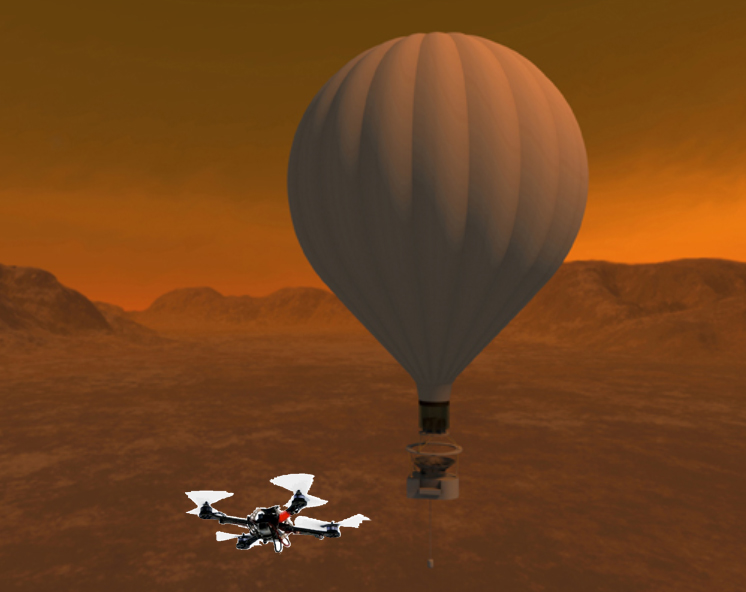
NASA has funded a dozen new far-out tech ideas that could lead to big breakthroughs in space exploration in the coming years and decades.
The 12 proposals, which were selected under Phase 1 of the NASA Innovative Advanced Concepts (NIAC) program, range from a submarine that would explore the hydrocarbon seas of Saturn's huge moon Titan to a probe that would travel around the solar system by hitching rides on comets.
"The latest NIAC selections include a number of exciting concepts for planetary exploration," Michael Gazarik, NASA's associate administrator for the Space Technology Mission Directorate in Washington, said in a statement. [Future Visions of Human Spaceflight (Gallery)]
"We are working with innovators around the nation to transform the future of aerospace, while also focusing our investments on concepts to address challenges of current interests both in space and here on Earth," he added.
Each funded Phase 1 proposal receives about $100,000 for nine months to a year of initial analysis studies. Awardees can later apply for a Phase 2 grant, which gives out up to $500,000 for two more years of concept development.
NIAC proposals tend to be quite ambitious, so NASA officials don't expect all of them to get off the ground. But the agency hopes that at least some of them will pan out, producing game-changing results down the road.
The 12 selected concepts, along with their principal investigators, are:
Get the Space.com Newsletter
Breaking space news, the latest updates on rocket launches, skywatching events and more!
- Swarm Flyby Gravimetry (Justin Atchison, Johns Hopkins University)
- Mars Ecopoiesis Test Bed (Eugene Boland, Techshot, Inc.)
- The Aragoscope: Ultra-High Resolution Optics at Low Cost (Webster Cash, University of Colorado)
- 3D Photocatalytic Air Processor for Dramatic Reduction of Life Support Mass & Complexity (Bin Chen, NASA's Ames Research Center)
- WRANGLER: Capture and De-Spin of Asteroids and Space Debris (Robert Hoyt, Tethers Unlimited)
- Titan Aerial Daughtercraft (Larry Matthies, NASA's Jet Propulsion Laboratory [JPL])
- Using the Hottest Particles in the Universe to Probe Icy Solar System Worlds (Timothy Miller, Johns Hopkins University)
- PERISCOPE: PERIapsis Subsurface Cave OPtical Explorer (Jeffrey Nosanov, JPL)
- Titan Submarine: Exploring the Depths of Kraken (Steven Oleson, NASA's Glenn Research Center)
- Comet Hitchhiker: Harvesting Kinetic Energy from Small Bodies to Enable Fast and Low-Cost Deep Space Exploration (Masahiro Ono, JPL)
- Exploration Architecture with Quantum Inertial Gravimetry and In Situ ChipSat Sensors (Brett Streetman, Draper Laboratory)
- Heliopause Electrostatic Rapid Transit System (HERTS) (Bruce Wiegmann, NASA's Marshall Space Flight Center)
To learn more about the 2014 Phase 1 awardees, go to the NIAC page here: http://www.nasa.gov/content/niac-2014-phase-i-selections/#.U5IdIxa-1g3
Follow Mike Wall on Twitter @michaeldwall and Google+. Follow us @Spacedotcom, Facebook or Google+. Originally published on Space.com.
Join our Space Forums to keep talking space on the latest missions, night sky and more! And if you have a news tip, correction or comment, let us know at: community@space.com.

Michael Wall is a Senior Space Writer with Space.com and joined the team in 2010. He primarily covers exoplanets, spaceflight and military space, but has been known to dabble in the space art beat. His book about the search for alien life, "Out There," was published on Nov. 13, 2018. Before becoming a science writer, Michael worked as a herpetologist and wildlife biologist. He has a Ph.D. in evolutionary biology from the University of Sydney, Australia, a bachelor's degree from the University of Arizona, and a graduate certificate in science writing from the University of California, Santa Cruz. To find out what his latest project is, you can follow Michael on Twitter.









